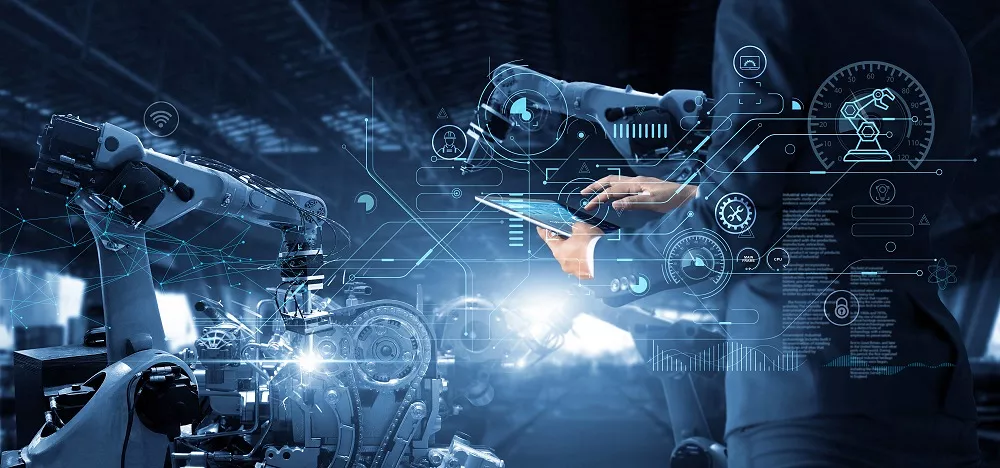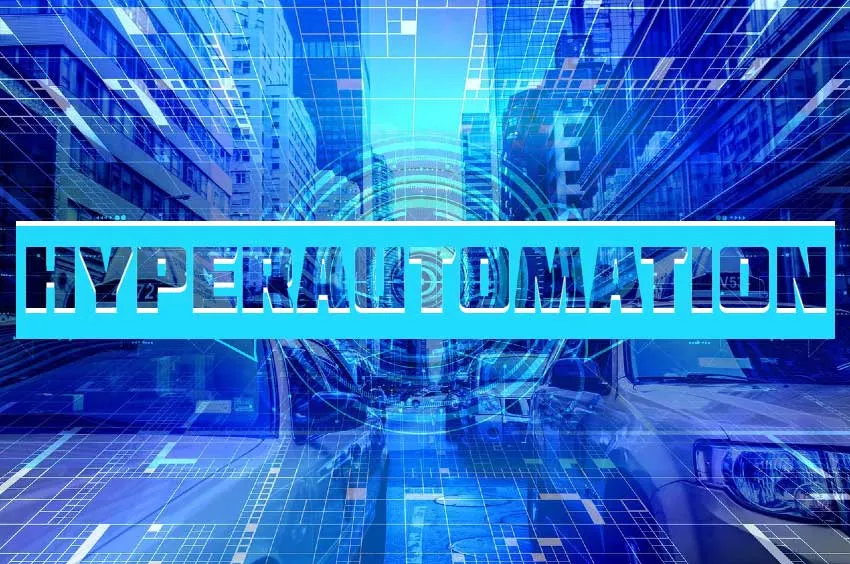Being a responsible CTO isn’t just about moving to the cloud
 The reasons for needing to be a responsible CTO are just as strong as the need
to be a tech-savvy one if a company wants to thrive in a digital economy. There
are many facets to being a responsible CTO, such as making sure that code is
being written in a diverse way, and that citizen data is being used
appropriately. In a BCS webinar, IBM fellow and vice-president for technology in
EMEA, Rashik Parmar, summarised that the three biggest forces driving
unprecedented change today included post-pandemic work; digitalisation; and the
climate emergency. With many organisations turning to technology to help solve
some of the biggest challenges they’re facing today, it’s clear that there will
need to be answers about how this tech-heavy economy will impact the
environment. It makes sense that this is often the first place that a CTO will
start when deciding how to drive a more responsible future. ... If we focus on
the environmental considerations, it’s becoming more commonly known that whilst
a move to the cloud may be better for reducing an organisation’s carbon
emissions than running multiple on-premises systems, the initiative alone isn’t
going to spell good news for climate change.
The reasons for needing to be a responsible CTO are just as strong as the need
to be a tech-savvy one if a company wants to thrive in a digital economy. There
are many facets to being a responsible CTO, such as making sure that code is
being written in a diverse way, and that citizen data is being used
appropriately. In a BCS webinar, IBM fellow and vice-president for technology in
EMEA, Rashik Parmar, summarised that the three biggest forces driving
unprecedented change today included post-pandemic work; digitalisation; and the
climate emergency. With many organisations turning to technology to help solve
some of the biggest challenges they’re facing today, it’s clear that there will
need to be answers about how this tech-heavy economy will impact the
environment. It makes sense that this is often the first place that a CTO will
start when deciding how to drive a more responsible future. ... If we focus on
the environmental considerations, it’s becoming more commonly known that whilst
a move to the cloud may be better for reducing an organisation’s carbon
emissions than running multiple on-premises systems, the initiative alone isn’t
going to spell good news for climate change.Frozen Neon Invention Jolts Quantum Computer Race
 The group's experiments reveal that within optimization, the new qubit can
already stay in superposition for 220 nanoseconds and change state in only a few
nanoseconds, which outperform qubits based on electric charge that scientists
have worked on for 20 years. "This is a completely new qubit platform," Jin
says. "It adds itself to the existing qubit family and has big potential to be
improved and to compete with currently well-known qubits." The researchers
suggest that by developing qubits based on an electron's spin instead of its
charge, they could develop qubits with coherence times exceeding one second.
They add the relative simplicity of the device may lend itself to easy
manufacture at low cost. The new qubit resembles previous work creating qubits
from electrons on liquid helium. However, the researchers note frozen neon is
far more rigid than liquid helium, which suppresses surface vibrations that can
disrupt the qubits. It remains uncertain how scalable this new system is—whether
it can incorporate hundreds, thousands or millions of qubits.
The group's experiments reveal that within optimization, the new qubit can
already stay in superposition for 220 nanoseconds and change state in only a few
nanoseconds, which outperform qubits based on electric charge that scientists
have worked on for 20 years. "This is a completely new qubit platform," Jin
says. "It adds itself to the existing qubit family and has big potential to be
improved and to compete with currently well-known qubits." The researchers
suggest that by developing qubits based on an electron's spin instead of its
charge, they could develop qubits with coherence times exceeding one second.
They add the relative simplicity of the device may lend itself to easy
manufacture at low cost. The new qubit resembles previous work creating qubits
from electrons on liquid helium. However, the researchers note frozen neon is
far more rigid than liquid helium, which suppresses surface vibrations that can
disrupt the qubits. It remains uncertain how scalable this new system is—whether
it can incorporate hundreds, thousands or millions of qubits.AI for Cybersecurity Shimmers With Promise, but Challenges Abound
 There are definitely differences in opinions between business executives, who
largely consider AI to be a perfect solution, and security analysts on the
ground, who have to deal with the day-to-day reality, says Devo's Ollmann. "In
the trenches, the AI part is not fulfilling the expectations and the hopes of
better triaging, and in the meantime, the AI that is being used to detect
threats is working almost too well," he says. "We see the net volume of alerts
and incidents that are making it into the SOC analysts hands is continuing to
increase, while the capacity to investigate and close those cases has remained
static." The continuing challenges that come with AI features mean that
companies still do not trust the technology. A majority of companies (57%) are
relying on AI features more or much more than they should, compared with only
14% who do not use AI enough, according to respondents to the survey. In
addition, few security teams have turned on automated response, partly because
of this lack of trust, but also because automated response requires a tighter
integration between products that just is not there yet, says Ollman.
There are definitely differences in opinions between business executives, who
largely consider AI to be a perfect solution, and security analysts on the
ground, who have to deal with the day-to-day reality, says Devo's Ollmann. "In
the trenches, the AI part is not fulfilling the expectations and the hopes of
better triaging, and in the meantime, the AI that is being used to detect
threats is working almost too well," he says. "We see the net volume of alerts
and incidents that are making it into the SOC analysts hands is continuing to
increase, while the capacity to investigate and close those cases has remained
static." The continuing challenges that come with AI features mean that
companies still do not trust the technology. A majority of companies (57%) are
relying on AI features more or much more than they should, compared with only
14% who do not use AI enough, according to respondents to the survey. In
addition, few security teams have turned on automated response, partly because
of this lack of trust, but also because automated response requires a tighter
integration between products that just is not there yet, says Ollman.
Concerned about cloud costs? Have you tried using newer virtual machines?
“Customers are willing to pay more for newer GPU instances if they deliver value in being able to solve complex problems quicker,” he wrote. Some of this can be chalked up to the fact that, until recently, customers looking to deploy workloads on these instances have had to do so on dedicated GPUs, as opposed to renting smaller virtual processing units. And while Rogers notes that customers, in large part, prefer to run their workloads this way, that may be changing. Over the past few years, Nvidia — which dominates the cloud GPU market — has, for one, introduced features that allow customers to split GPUs into multiple independent virtual processing units using a technology called Multi-instance GPU or MIG for short. Debuted alongside Nvidia’s Ampere architecture in early 2020, the technology enables customers to split each physical GPU into up to seven individually addressable instances. And with the chipmaker’s Hopper architecture and H100 GPUs, announced at GTC this spring, MIG gained per-instance isolation, I/O virtualization, and multi-tenancy, which open the door to their use in confidential computing environments.Attackers Use Event Logs to Hide Fileless Malware
 The ability to inject malware into system’s memory classifies it as
fileless. As the name suggests, fileless malware infects targeted computers
leaving behind no artifacts on the local hard drive, making it easy to
sidestep traditional signature-based security and forensics tools. The
technique, where attackers hide their activities in a computer’s
random-access memory and use a native Windows tools such as PowerShell and
Windows Management Instrumentation (WMI), isn’t new. What is new is new,
however, is how the encrypted shellcode containing the malicious payload is
embedded into Windows event logs. To avoid detection, the code “is divided
into 8 KB blocks and saved in the binary part of event logs.” Legezo said,
“The dropper not only puts the launcher on disk for side-loading, but also
writes information messages with shellcode into existing Windows KMS event
log.” “The dropped wer.dll is a loader and wouldn’t do any harm without the
shellcode hidden in Windows event logs,” he continues. “The dropper searches
the event logs for records with category 0x4142 (“AB” in ASCII) and having
the Key Management Service as a source.
The ability to inject malware into system’s memory classifies it as
fileless. As the name suggests, fileless malware infects targeted computers
leaving behind no artifacts on the local hard drive, making it easy to
sidestep traditional signature-based security and forensics tools. The
technique, where attackers hide their activities in a computer’s
random-access memory and use a native Windows tools such as PowerShell and
Windows Management Instrumentation (WMI), isn’t new. What is new is new,
however, is how the encrypted shellcode containing the malicious payload is
embedded into Windows event logs. To avoid detection, the code “is divided
into 8 KB blocks and saved in the binary part of event logs.” Legezo said,
“The dropper not only puts the launcher on disk for side-loading, but also
writes information messages with shellcode into existing Windows KMS event
log.” “The dropped wer.dll is a loader and wouldn’t do any harm without the
shellcode hidden in Windows event logs,” he continues. “The dropper searches
the event logs for records with category 0x4142 (“AB” in ASCII) and having
the Key Management Service as a source.
Fortinet CEO Ken Xie: OT Business Will Be Bigger Than SD-WAN
"We definitely see OT as a bigger market going forward, probably bigger than SD-WAN," Xie tells investors Wednesday. "The growth is very, very strong. We do see a lot of potential, and we also have invested a lot in this area to meet the demand." Despite its potential, Fortinet's OT practice today is considerably smaller than its SD-WAN business, which has been a company priority for years. SD-WAN accounted for 16% of Fortinet's total billings in the quarter ended Dec. 31 while OT accounted for just 8% of total billings over that same time period. Fortinet last summer had the second-largest SD-WAN market share in the world, trailing only Cisco. Fortinet's OT success coincides with growing demand from manufacturers, which CFO Keith Jensen says is the one vertical that continues to stand out for the company. ... "The strength in manufacturing really speaks to the threat environment, ransomware, OT, and things of that nature," Jensen says. "Manufacturing is trying desperately to break into the top five of our verticals and it's getting closer and closer every quarter."Meta has built a massive new language AI—and it’s giving it away for free
 Meta AI says it wants to change that. “Many of us have been university
researchers,” says Pineau. “We know the gap that exists between universities
and industry in terms of the ability to build these models. Making this one
available to researchers was a no-brainer.” She hopes that others will pore
over their work and pull it apart or build on it. Breakthroughs come faster
when more people are involved, she says. Meta is making its model, called
Open Pretrained Transformer (OPT), available for non-commercial use. It is
also releasing its code and a logbook that documents the training process.
The logbook contains daily updates from members of the team about the
training data: how it was added to the model and when, what worked and what
didn’t. In more than 100 pages of notes, the researchers log every bug,
crash, and reboot in a three-month training process that ran nonstop from
October 2021 to January 2022. With 175 billion parameters (the values in a
neural network that get tweaked during training), OPT is the same size as
GPT-3. This was by design, says Pineau.
Meta AI says it wants to change that. “Many of us have been university
researchers,” says Pineau. “We know the gap that exists between universities
and industry in terms of the ability to build these models. Making this one
available to researchers was a no-brainer.” She hopes that others will pore
over their work and pull it apart or build on it. Breakthroughs come faster
when more people are involved, she says. Meta is making its model, called
Open Pretrained Transformer (OPT), available for non-commercial use. It is
also releasing its code and a logbook that documents the training process.
The logbook contains daily updates from members of the team about the
training data: how it was added to the model and when, what worked and what
didn’t. In more than 100 pages of notes, the researchers log every bug,
crash, and reboot in a three-month training process that ran nonstop from
October 2021 to January 2022. With 175 billion parameters (the values in a
neural network that get tweaked during training), OPT is the same size as
GPT-3. This was by design, says Pineau. Tackling the threats posed by shadow IT
Shadow IT can be tough to mitigate, given the embedded culture of hybrid working in many organizations, in addition to a general lack of engagement from employees with their IT teams. For staff to continue accessing apps securely from anywhere, at any time, and from any device, businesses must evolve their approach to organizational security. Given the modern-day working environment moves at such a fast pace, employees have turned en masse to shadow IT when the experience isn’t quick or accurate enough. This leads to the bypassing of secure networks and best practices and can leave IT departments out of the process. A way of controlling this is by deploying corporate managed devices that provide remote access, giving IT teams most of the control and removing the temptation for employees to use unsanctioned hardware. Providing them with compelling apps, data, and services with a good user experience should see a reduced dependence on shadow IT, putting IT teams back in the driving seat and restoring security.5 AI adoption mistakes to avoid
 Every AI-related business goal begins with data – it is the fuel that
enables AI engines to run. One of the biggest mistakes companies make is not
taking care of their data. This begins with the misconception that data is
solely the responsibility of the IT department. Before data is captured and
input into AI systems, business subject matter experts and data scientists
should be looped in, and executives should provide oversight to ensure the
right data is being captured and maintained appropriately. It’s important
for non-IT personnel to realize they not only benefit from good data in
yielding quality AI recommendations, but their expertise is a critical input
to the AI system. Make sure that all teams have a shared sense of
responsibility for curating, vetting, and maintaining data. Data management
procedures are also a key component of data care. ... AI requires
intervention to sustain it as an effective solution over time. For example,
if AI is malfunctioning or if business objectives change, AI processes need
to change. Doing nothing or not implementing adequate intervention could
result in AI recommendations that hinder or act contrary to business
objectives.
Every AI-related business goal begins with data – it is the fuel that
enables AI engines to run. One of the biggest mistakes companies make is not
taking care of their data. This begins with the misconception that data is
solely the responsibility of the IT department. Before data is captured and
input into AI systems, business subject matter experts and data scientists
should be looped in, and executives should provide oversight to ensure the
right data is being captured and maintained appropriately. It’s important
for non-IT personnel to realize they not only benefit from good data in
yielding quality AI recommendations, but their expertise is a critical input
to the AI system. Make sure that all teams have a shared sense of
responsibility for curating, vetting, and maintaining data. Data management
procedures are also a key component of data care. ... AI requires
intervention to sustain it as an effective solution over time. For example,
if AI is malfunctioning or if business objectives change, AI processes need
to change. Doing nothing or not implementing adequate intervention could
result in AI recommendations that hinder or act contrary to business
objectives.SEC Doubles Cyber Unit Staff to Protect Crypto Users
 The SEC says that the newly named Crypto Assets and Cyber Unit, formerly
known as the Cyber Unit, in the Division of Enforcement, will grow to 50
dedicated positions. "The U.S. has the greatest capital markets because
investors have faith in them, and as more investors access the crypto
markets, it is increasingly important to dedicate more resources to
protecting them," says SEC Chair Gary Gensler. This dedicated unit has
successfully brought dozens of cases against those seeking to take advantage
of investors in crypto markets, he says. ... "This is great news! A lot of
the cryptocurrency market is against any regulations, including those that
would safeguard their own value, but that's not the vast majority of the
rest of the world. The cryptocurrency world is full of outright scams,
criminals and ne'er-do-well-ers," says Roger Grimes, data-driven defense
evangelist at cybersecurity firm KnowBe4. Grimes adds that even legal and
very sophisticated financiers and investors are taking advantage of the
immaturity of the cryptocurrency market.
The SEC says that the newly named Crypto Assets and Cyber Unit, formerly
known as the Cyber Unit, in the Division of Enforcement, will grow to 50
dedicated positions. "The U.S. has the greatest capital markets because
investors have faith in them, and as more investors access the crypto
markets, it is increasingly important to dedicate more resources to
protecting them," says SEC Chair Gary Gensler. This dedicated unit has
successfully brought dozens of cases against those seeking to take advantage
of investors in crypto markets, he says. ... "This is great news! A lot of
the cryptocurrency market is against any regulations, including those that
would safeguard their own value, but that's not the vast majority of the
rest of the world. The cryptocurrency world is full of outright scams,
criminals and ne'er-do-well-ers," says Roger Grimes, data-driven defense
evangelist at cybersecurity firm KnowBe4. Grimes adds that even legal and
very sophisticated financiers and investors are taking advantage of the
immaturity of the cryptocurrency market. Quote for the day:
"The very essence of leadership is that you have to have vision. You can't blow an uncertain trumpet." -- Theodore M. Hesburgh





























